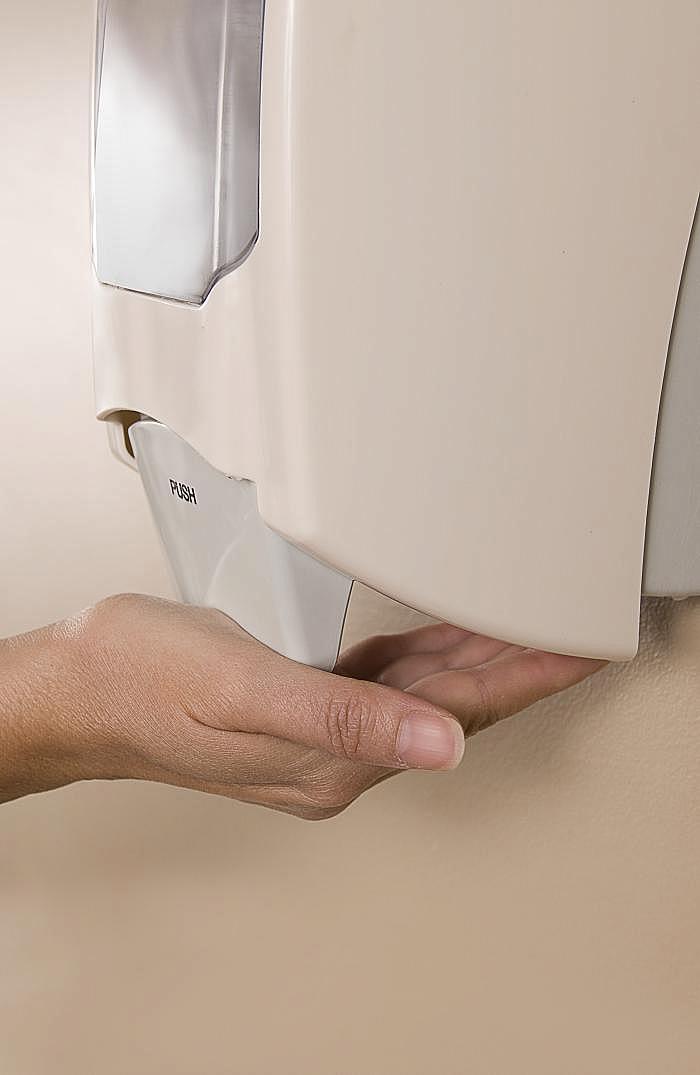Nurse Shares 40+ Years of Experience with Hospital Hygiene

PHOTO CREDIT: CDC/Amanda Mills
EDITOR’S NOTE: In response to William Heisel’s post -- Scrubs and Sandwiches: Applause for Mom’s Idea of Photographing Scrubs in Public -- Marni Hancock, a retired R.N. and nursing instructor, had the following comment, which has been edited for our Member Blog.
Long ago and far away -- from fall of 1966 to spring of 1969 -- I was a nursing student in California. The main hospitals where we had our clinical experiences provided a locker room to change from street clothing to our student nurse uniforms, which included switching our shoes. We were not allowed to wear our uniforms to and from the hospitals. I haven't seen that kind of arrangement (for hospital staff, much less for students) since then, but I wish it still existed.
I doubt that most nurses bring a lot of pathogens into the hospital when they come to work. However, I have known nurses who kept shoes in their lockers at work so they could change them to reduce the number of pathogens they carried home. Way too often I've seen physicians and nurses shopping or socializing after work while dressed in the clothing they wore to provide patient care. There are issues of possible contamination in these situations, and, sometimes, there are issues of role modeling, especially when health care providers, dressed as health care providers, are smoking and/or consuming alcoholic beverages.
As long as hospitals, clinics, and other health care settings, don't provide uniforms/scrubs for persons providing direct patient care, people will wear their scrubs to and from work. In my experience, all ORs require all personnel who enter the areas immediately around the operating rooms to change into hospital provided scrubs and to wear shoe covers.
I will also say that the number of doctors (especially) and nurses who accurately follow the rules for safety (the CDC roles for isolation rooms) when in the hospital rooms of patients with suspected or known bacterial skin or draining infections is miniscule. In all my years working in hospitals and supervising student nurses in hospitals, it has been rare to see a physician don the protective gown and gloves that are provided to keep the doctor's hands and clothing protected from the bacteria KNOWN to be present in the room. Thank Heaven for the ethanol-based hand gel dispensers at the doorways of each patient room! I've actually seen physicians use those after touching the dressings or skin around an infected area. I say that because it has also been rare, in my experience, to see a physician wash his/her hands before or after touching a patient. Nurses are much more likely to follow the rules -- because they can lose their jobs for non-compliance; they are taught with a stronger emphasis on technique; and they've had role models who emphasized the importance of compliance.
I've seen physicians and nurses carry either patient medical records (charts) or clipboards in and out of patient rooms, setting the objects down in the rooms and thus carrying any pathogens out of the patient room back to the nurses’ station. Then any pathogens from the patient's room are readily available to travel from the nurses’ station into other patient rooms.
Now, it is clear to me that if the physician simply enters a patient's hospital room, speaks with the patient, then leaves without touching the patient, the doctor isn't picking up pathogens on his/her hands -- unless, of course, he/she touches the door on the way in or out of the room. One can never assume that previous people who entered and exited the room performed hand hygiene appropriately before touching the door, so I always assumed they hadn't.
I can remember when the only "clean" gloves (the ones that come packed in boxes that can be extracted one at a time for keeping the health care providers hands clean -- as different from the sterile surgical gloves that come individually packaged) were very difficult to come by. I remember a debate in the "letters to the editor" in the American Journal of Nursing, over whether wearing clean gloves to provide hygiene to a patient who had been incontinent of feces caused the patient further embarrassment by implying that they were so "unclean," the nurse found it distasteful to even touch his or her skin. I gave many injections and started many IVs with bare hands. I got blood on my hands and washed it off fairly regularly. The gloves were only supplied on the isolation carts for patients with known infections (either bacterial or the viral diseases such as hepatitis).
The age of HIV changed the debate, so that clean gloves are available in EVERY patient room. The "Standard Precautions" or "Universal Precautions" now insist that health care providers practice as if every patient had HIV or a similar blood/body fluid infection.
Many years ago an OR nurse told me that physicians learn diagnosis and treatment; nurses learn more of treatment and procedures. Nurses can be an important part of helping new physicians learn procedures -- reminding them to don protective equipment before entering patient rooms and performing hand hygiene before and after touching anything in a patient's room. Unfortunately, most physicians are "socialized" into practicing the same way their instructors and mentors practice and this rarely includes performing hand hygiene at appropriate times.
Some things have improved dramatically over nearly 50 years. Newer hospitals have only private patient rooms -- rarely will they have semiprivate rooms and wards are extinct. I can remember caring for patients in a 4 bed ward where the isolation procedures involved keeping the curtain closed around the bed and a fomite basin on a small cart near the foot of the bed where items and hands could be cleaned prior to leaving the area. It's not a new problem we're discussing here, but it's an important issue that's getting more important.
